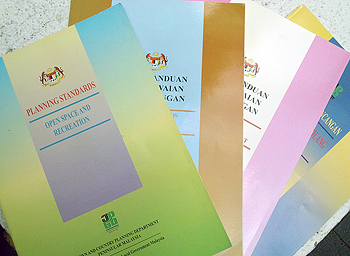NEW development projects seem to be on the rise again in Petaling Jaya. Much of these are apparently over open spaces set aside by previous developers. Naturally, this would have existing neighbours up in arms and protesting against the new development.
No doubt residents caught in such a situation would like to ask the following question: Can the Petaling Jaya City Council (MBPJ) really approve a development over an empty piece of land located next to my house?
What the rules say

Under development rules, at least 10% of an area to be developed must be declared open space and set aside for public use. These open spaces are identified at the onset when layout plans (detailed in the Town and Country Planning Act) are prepared for a development area.
Once an area is developed, the developer hands over the allocated open space to the state government so that public funds may be used to maintain these open spaces.
Defining open space
The Town and Country Planning Act has the following definition: “Open space means any land whether enclosed or not which is laid out or reserved for laying out wholly or partly as a public garden, park, sports and recreation ground, pleasure ground, walk or as a public place.”
The Interpretation Acts of 1948 and 1967 also provide this description: “Public place includes every public highway, street, road, bridge, square, court, alley, lane, bridle way, footway, parade, wharf, jetty, quay, public garden or open space (…).”
These definitions indicate that open spaces are meant to be public places.
However, as a town planner explained to me, reserved use of empty land as a public place only applies if the state government had officially gazetted the area as open space. Indeed, much of the land set aside as open space by the original developers of Petaling Jaya were never gazetted as such.
This reasoning apparently justifies the present assumption that the state government can do as it pleases with land meant for open space so long as the state doesn’t gazette it. This includes changing the land use and the selling of such land parcels.
Constitutional provision for open spaces
The argument could certainly go back and forth were it not for the books on planning standards produced by the federal Town and Country Planning Department.
The guidelines for open spaces are “to apply the policy formulated by the National Council for Local Government at the 47th meeting dated 9 Aug 1999”. This policy states that:
All public open spaces that are surrendered to the state government must be reserved as public open space under the maintenance of the local authority and be gazetted.
For open space that is not surrendered, action must be taken to ensure that it becomes government land and be subsequently reserved and gazetted. Local authorities must apply for the open space to be developed as a public open space.
There are numerous other conditions listed, but suffice to say that these two requirements demonstrate the clear instructions on what the state government must do with land surrendered to it.
These rules cannot be ignored either, because the National Council for Local Government is a constitutional provision defined under Article 95A of the Federal Constitution. The council chairperson shall be a minister and the committee shall comprise one representative from each state, who shall be appointed by the Ruler or Yang di-Pertua Negeri.
The Council’s authority is defined under Article 95A(5): “It shall be the duty of the National Council for Local Government to formulate from time to time in consultation with the Federal Government and the State governments a national policy for the promotion, development and control of local government throughout the Federation and for the administration of any laws relating thereto; and the Federal and State Governments shall follow policy so formulated.”

Since Article 95A mandates that the policies formulated by the National Council be followed, the failure to implement the policy is tantamount to contempt of our Federal Constitution.
Of course, while this rule may be cited by residents protesting a development project, the local council could just as easily deny that the land on which the proposed project is to be built was ever set aside as open space. And disproving the local council would be difficult, as gaining access to the right documents would not be easy.
Residents should take heart, however, because there is more information which protects their rights. I’m not done yet with my revelations on what the government is supposed to do for the rakyat.![]()
While doing research on open spaces, MBPJ councillor KW Mak discovered the following fact from the Interpretation Acts: “In case of any conflict or discrepancy between the English text of a written law and any translation thereof, the English text shall prevail.” He has since fantasised about having all elected representatives subjected to an English language proficiency test to see if they are capable of comprehending the English language laws that we have.
Update on freehold titles for PJ Old Town
As an aside, readers seeking an update on my previous column on freehold titles for Petaling Jaya Old Town should know that the Petaling District Land Office is no longer accepting applications to renew land leases since the issue was reported in The Star. The Selangor government has, however, remained silent on the issue.
Bukit Gasing assemblyperson Edward Lee meanwhile, in an email to community leaders, promised that the Selangor government would issue a statement on the matter in December. However, the email was written without any official letterhead.
The residents and several institutions in PJ Old Town have also formed a committee to discuss this issue at length and to engage the state and federal government.


Patrick says
Unfortunately for most Petaling Jaya residents, most open spaces often get converted into shopping malls, office blocks, food stalls and the like.
If a developer suddenly appears on what was an open space before, would residents have the power to oppose it, especially if it means building a shopping mall right next to a residential area?
KW Mak says
@Patrick
I have been able to put a stop to several proposed developments that were brought to my attention using the same information I am slowly releasing to the public via my column. So, to your question about whether residents have the power to oppose a development, the answer would be “yes”.
And being a councillor has nothing to do with my ability to oppose a development. I believe the adage “knowledge is power” applies here.